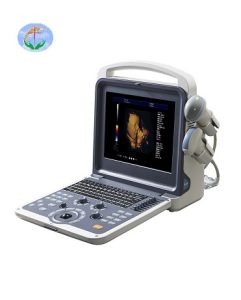How to choose ultrasound probe?
Probes can be varied according to the shapes. Each type has a different specialty, their shape and the crystal formation differentiate the way they display images, and the frequencies that they operate on.
●Linear probe – this has flat array and appearance. The piezoelectric crystals in linear probe are arranged in a linear formation which creates a straight sound wave. The probe has higher frequency (5MHz – 13MHz) which provides better resolution and less penetration. Therefore, this probe is ideal for imaging superficial structures. This can be applied to wide variety of uses, such as vascular, breast, thyroid, tendon examinations.
●Convex probe – Convex probes are otherwise called as curvilinear probe have curved array that allows for a wider field of view. The piezoelectric crystals are arranged in a curvilinear formation, The frequency ranges between (2MHz – 5MHz), which have higher penetration. These probe are great for more in-depth examinations, widely used for abdominal screening and fetal studies, vascular, OB/GYN, nerve and musculoskeletal examinations. Because, the sound waves produces wider and deeper view due to the curvilinear arrays of crystals.
●Endocavity probe – The endocavity probe is been examined close to the view of the anatomical site, This is otherwise called as Pencil probe and Transvaginal probe. This probe is used to view endovaginal, endorectal, scanning the inside of the body as well, have longer handle and a “U” shaped lens and array. The piezoelectric crystal arrangement is much wider than the Convex probes, frequency ranges from (8MHz – 13MHz). So, the higher the frequency creates field of view of 180° and gives superior resolution.
●Phased array/Cardiac probe – Phased array or Cardiac proves have smaller handle and square shaped lens and array. Usually, they scan images of the heart. It has fewer crystal arrangement, but have greater depth in order to reach the heart and produce image. The frequency ranges between (1MHz – 3MHz). This probe scans with beam steering method, which is altering the angle of the ultrasound beam with respect to the transducer without moving the probe.


